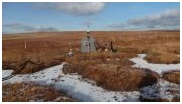Realizing the entrepreneurial capacities in local housewives for adaptation to climate change
CONANP has supported a new women’s cooperative (“las orchidias”) aimed at providing additional and innovative, non-capital intensive, eco-touristic services, and thus delivering additional sources of income to climate-change threatened lobster fishing families. Examples include: bicycle and kayak tours, and environmental interpretation routes.
CONANP has provided support in the form of :
a) Training for multiple actors
b) Financing,
c) Certification of activities and services
d) Organizing women’s peer-to-peer knowledge exchange and mentoring
The additional co-benefits of this approach have been to increase the confidence and self-esteem of local housewives, and to raise their position in the eyes of their families, as well as to provide a new potential organized group as a platform for future activities.
Existing (or newly generated) formal organizational capacity;
Awareness-raising not only amongst women, but within the community, as to the benefits of women-led productive activities.
Peer-to-peer exchange and mentoring opportunities.
a) Sufficient resources for supporting:
b) Awareness-raising
c) Training
d) Idea generation
e) Certification
f) Equipment
Women play a great role in the maintenance and resilience of the livelihoods of their families and communities, and there is much unused capacity that can be unleashed in the generation and implementation of new businesses. However, the barriers to doing so are high, and extra resources are needed. It is not a building block that can be implemented cheaply.
If there is not a formal organizational capacity (such as cooperatives), it has to be generated, for this type of effort to be successfully realized;
In situations where traditional productive activities are led by men, much effort and resources need to be employed to overcome entry barriers for women in front of productive activities.
Training, certification and equipment, are not enough for women’s immersion in new businesses. It is crucial to promote the exchange of lessons learned between women of different communities, and long-term peer-to-peer mentoring.
Need of business skills capacity development.
Evidences are needed
